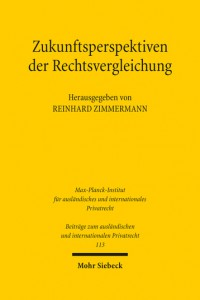Many thanks to Alexia Pato, PhD candidate at the Universidad Autónoma, Madrid, for this piece of news. And my best wishes!
Today, blog droit européen officially celebrates the opening of its European and private international law section (hereafter, EU and PIL section), which is edited and coordinated by Karolina Antczak (Ph.D. candidate at Université de Lille), Basile Darmois (Ph.D. candidate at Université Paris Est Créteil) and Alexia Pato (Ph.D. candidate at Universidad Autónoma de Madrid). In a recently published inaugural post (available here), they present their project in detail. In particular, they expose the positive interactions between PIL and European law, as well as their friction points. Undoubtedly, the increasingly tight links that are forged between these two disciplines encourage legal experts to collaborate and exchange their views. The creation of the mentioned section in blog droit européen contributes to the achievement of this objective.
The Content of the European and Private International Law Section
Although the EU and PIL section has just been inaugurated, more food for thought will be uploaded soon. Readers will find articles diving into PIL issues, and we will be covering additional areas such as international civil litigation, as well as the internal market and its four freedoms. Don’t miss our upcoming co-signed article on Brexit, highlighting its legal consequences from an international perspective. Also, on its way is a post discussing the EU’s competence to adopt minimum standards of civil procedure. Additionally, the team plans to upload interviews with professors and legal experts, who debate fundamental EU and PIL matters. These interviews will be available in video format. Lastly, readers will be able to stay updated by reading our posts on the latest legal news.
Contribute to the European and Private International Law Section
In order to foster constructive debates and extract the merits of collaborative learning, we welcome any Ph.D. candidate, professor, or legal professional to voice his/her opinion on the EU and PIL section. You may submit your ideas in the form of a post (approximately 1.000 words), which consists of a critical assessment on a particular topic. Working papers, video conferences and tutorials are equally welcome (for more information on how to contribute, click here). Articles can be written in either French or English.
What is blog droit européen?
Blog droit européen is a website that provides information with an interactive touch on a broad range of legal topics such as: digital single market, Economic and monetary Union, competition law, and so on. In particular, its purpose is to gather together students, investigators, professors, and legal experts who share a common and enhanced interest for European law at large (EU, ECHR, impact of European law on States’ public and private laws). The originality of blog droit européen lies in two essential features: firstly, the blog delivers high quality and varied contents, including interviews (of ECJ members and professors), call for papers and conferences, not to mention working papers and legal columns, which critically analyse EU law. Secondly, the use of e-techniques of information sharing, like Facebook, Twitter, and YouTube make this blog interactive and user friendly. From an organizational perspective, blog droit européeen is run and edited by young investigators from different legal backgrounds in different Universities across Europe (for an overview of our team, click here). Thanks to Olivia Tambou (Lecturer at Université Paris-Dauphine), our dedicated team leader and creator/editor of the blog, for connecting us and making this project possible.
See you soon on blog droit européen!
 On the occasion of
On the occasion of